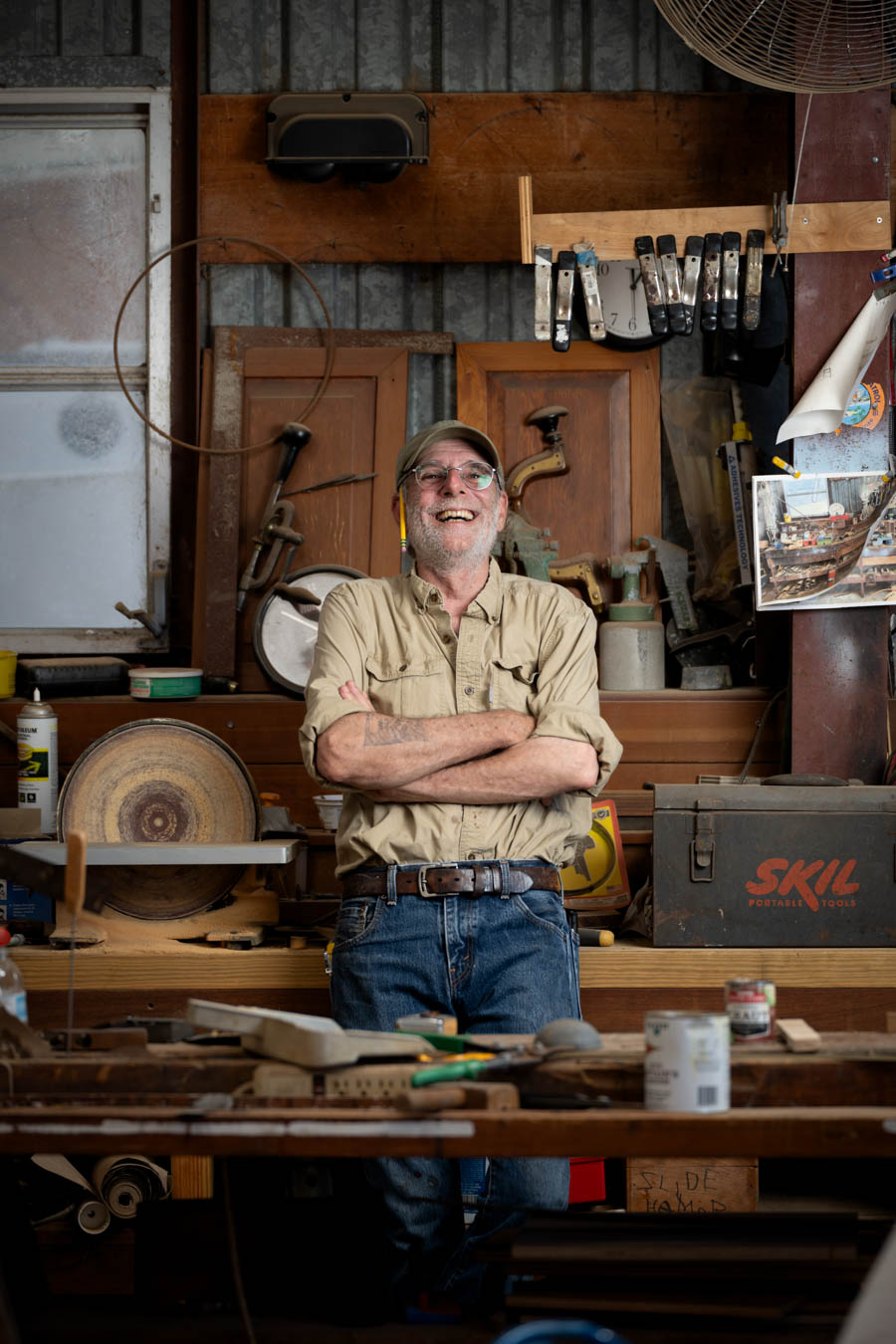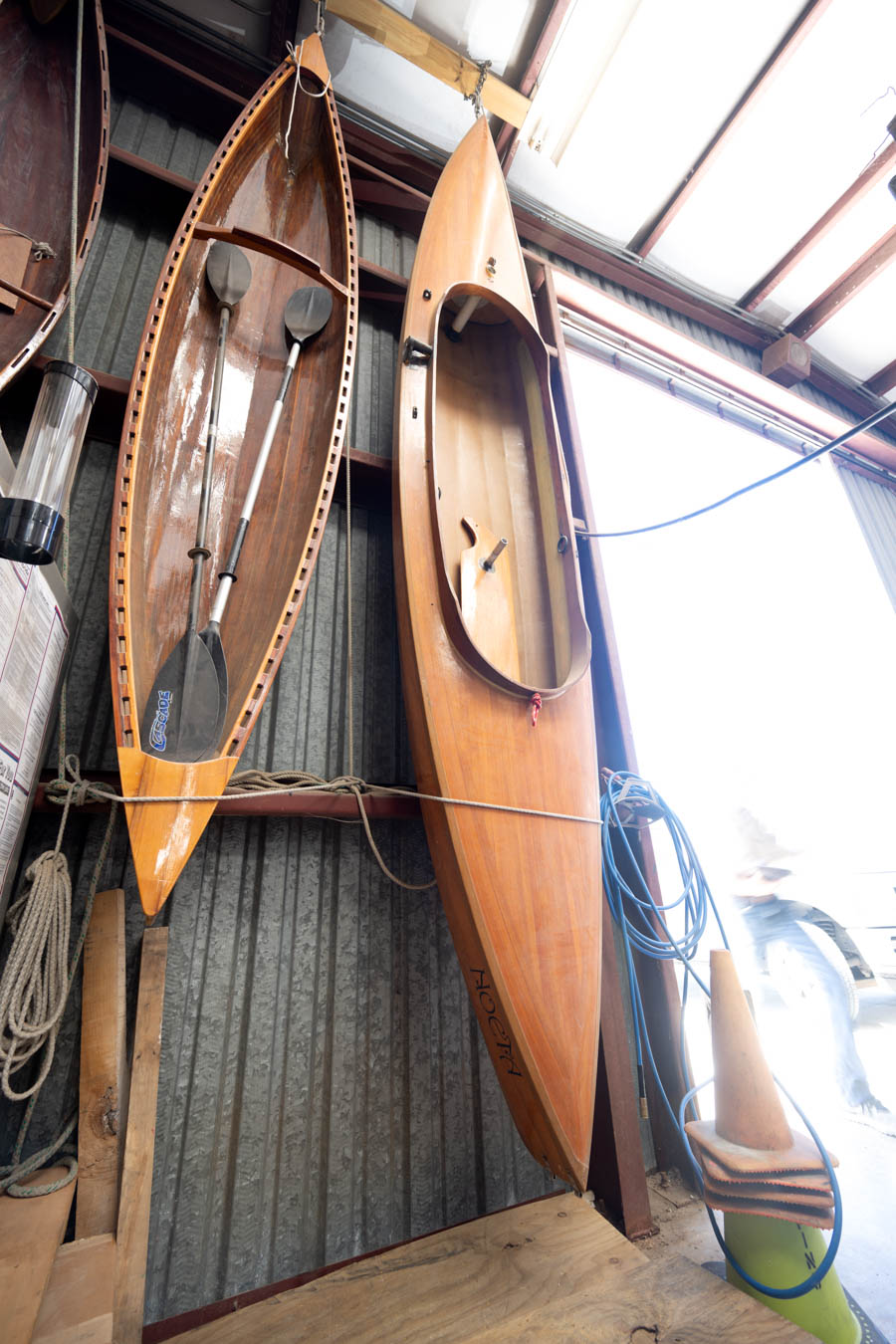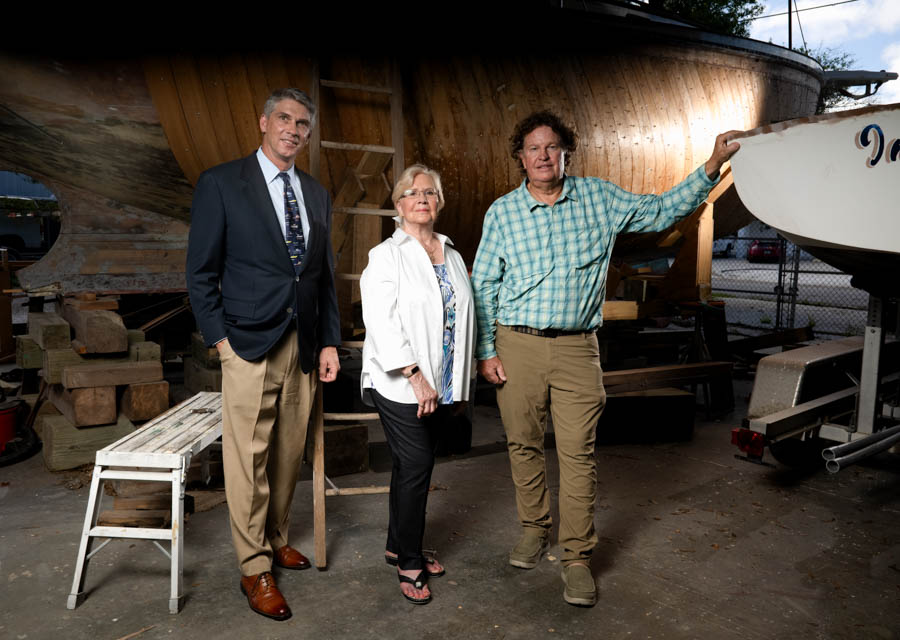From the outside, 2135 Princeton Street in Sarasota is the definition of unspectacular. Two large sheds of galvanized steel sit side by side in an unassuming street off an industrial park, rusting away in the unyielding Florida sun. Step inside, however, and you’ll find yourself transported into an entirely different world. Hulls of wooden boats fill the space in various states of restoration—some are sleek sailboats or clippers awaiting their next paint job, others are half-hull models of skiffs and dinghies with their bare support beams sticking out into the air like the skeletons of fossils from a time long ago. For the past 70 years this was the location of the now defunct George Luzier Boat Builders, the shop of legendary wooden boat builder George Luzier. Now, it is the conservation lab and current operating base of the Gulf Coast Maritime Museum—a burgeoning institution dedicated to preserving the rich history of boat building on Florida’s Gulf Coast.
While the Gulf Coast Maritime Museum is still technically without a building, the team behind it are finishing up a lease agreement on a piece of property in Manatee County, it is very much a living, breathing museum—defined by the passion of those behind it. The idea for a museum originated in 2019 when a team of boating enthusiasts, among them John and Laura Pether, authors of Wood, Fiberglass, and Steel: The History of Boat Building on Florida’s Gulf Coast, came together to address a problem: much of the Gulf Coast’s rich history of boat building was slowly fading away. “John researched all the way from the Everglades to Pensacola and realized that the history of these boat builders and boat building families was disappearing,” says Virginia Harshman, Executive Director of the Gulf Coast Maritime Museum. “The boats are disappearing, the boat builders are passing on and that’s when he gathered with a group of concerned people and realized that they had an opportunity to do something wonderful for the whole state of Florida.”

The museum’s mission is simple—preserve the rich history of boat building in Florida, a history that charts back 7,000 years to the region’s native settlers and their dugout canoes. When more people started to settle in Florida in the 1800s, infrastructure, particularly along the Gulf Coast, did not exist. Boats were the only way to move around and consequently, boat building became one of the state’s first real industries. While the museum will show the full extent of the history of boat building in the area, there will be a particular focus on the wooden boats that Sarasota is famous for. “The museum will also include fiberglass boats, of which we now have many major boat manufacturers based here in Florida as well as different methods of building modern boats,” says Harshman. “There will also be exhibits talking about the Liberty ships, freighters built here in WWII and other military craft built here as well.” The museum’s current collection of boats, all within differing stages of restoration, some seaworthy and others still in pieces,paint a more visceral picture of the history of boat building on the Gulf Coast. Sailboats, motorboats, skiffs and dinghies, made from wood and fiberglass alike are housed in the museum’s conservation lab as well as at Snead Island Boat Works, awaiting the day where they can be moved into a permanent location. Boats like the Annie-T, a 30-foot wooden sloop (a type of sailboat that typically has a single mast and two sails) designed by Sarasota School of Architecture founding member Tim Seibert and built by Luzier, tell the story of Sarasota itself—a city defined by water and the people who traverse it.

While current construction plans for the museum are being finalized, Harshman and the board have a vision for what the Gulf Coast Maritime Museum will look like. “We’ve been kicking around different design ideas, but one of the ones that people have really responded to is something that actually resembles the Luzier boatworks. A metal building that looks like it belongs with boats,” says Harshman. “We had a building design previously for a different plot of land, but we know that with some modifications the museum will have to be around 30,000-40,000 square feet with very tall ceilings in order to house the boats with their masts up.”
There is no set timeline for the construction of the museum, but Harshman and the board are hoping to open doors somewhere in the next two to five years. Until then, the Gulf Coast Maritime Museum will remain a resource dedicated to preservation of the region's past and future in boat building. An educational talk series, Written in Water, is set to make its rounds and the museum’s website is a hub of information. Stay tuned—in the next few years this museum without a home will surely have one.










